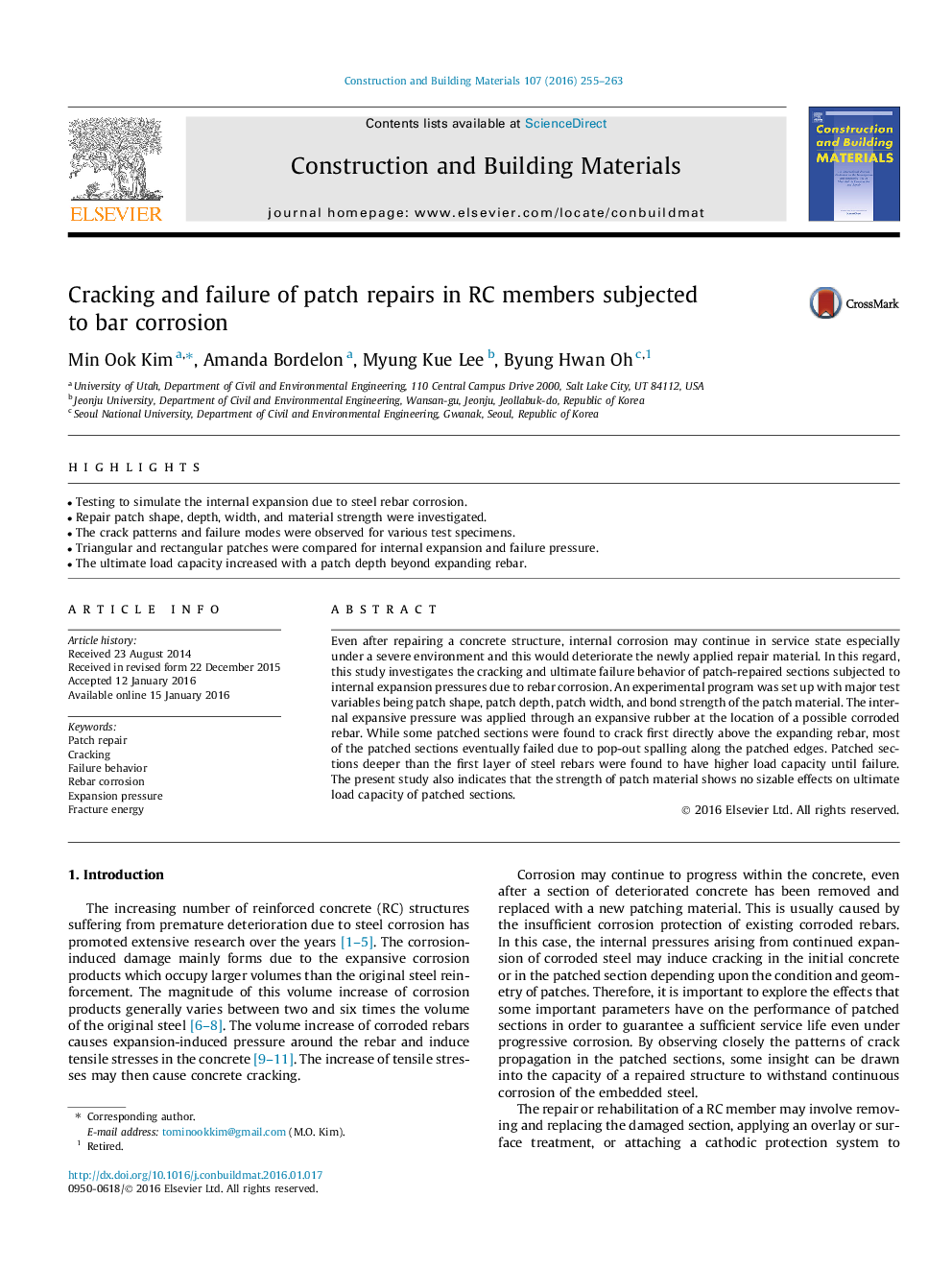| Article ID | Journal | Published Year | Pages | File Type |
|---|---|---|---|---|
| 256254 | Construction and Building Materials | 2016 | 9 Pages |
•Testing to simulate the internal expansion due to steel rebar corrosion.•Repair patch shape, depth, width, and material strength were investigated.•The crack patterns and failure modes were observed for various test specimens.•Triangular and rectangular patches were compared for internal expansion and failure pressure.•The ultimate load capacity increased with a patch depth beyond expanding rebar.
Even after repairing a concrete structure, internal corrosion may continue in service state especially under a severe environment and this would deteriorate the newly applied repair material. In this regard, this study investigates the cracking and ultimate failure behavior of patch-repaired sections subjected to internal expansion pressures due to rebar corrosion. An experimental program was set up with major test variables being patch shape, patch depth, patch width, and bond strength of the patch material. The internal expansive pressure was applied through an expansive rubber at the location of a possible corroded rebar. While some patched sections were found to crack first directly above the expanding rebar, most of the patched sections eventually failed due to pop-out spalling along the patched edges. Patched sections deeper than the first layer of steel rebars were found to have higher load capacity until failure. The present study also indicates that the strength of patch material shows no sizable effects on ultimate load capacity of patched sections.
